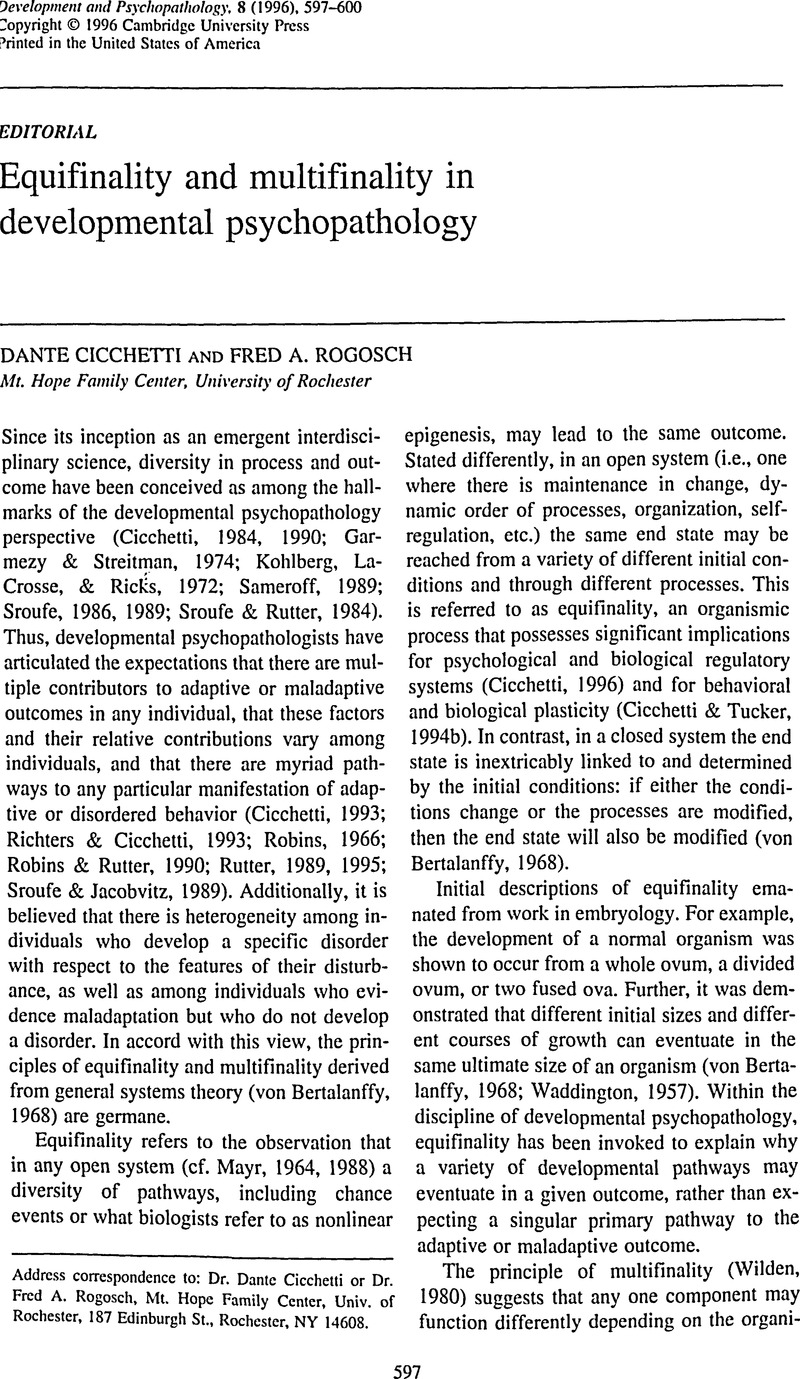Crossref Citations
This article has been cited by the following publications. This list is generated based on data provided by Crossref.
Cicchetti, Dante
Rogosch, Fred A.
Toth, Sheree L.
and
Spagnola, Mary
1997.
Affect, Cognition, and the Emergence of Self-Knowledge in the Toddler Offspring of Depressed Mothers.
Journal of Experimental Child Psychology,
Vol. 67,
Issue. 3,
p.
338.
Bender, Doris
and
Lösel, Friedrich
1997.
Protective and risk effects of peer relations and social support on antisocial behaviour in adolescents from multi-problem milieus.
Journal of Adolescence,
Vol. 20,
Issue. 6,
p.
661.
Zucker, Kenneth J
and
Bradley, Susan J
1998.
Adoptee Overrepresentation among Clinic-Referred Boys with Gender Identity Disorder.
The Canadian Journal of Psychiatry,
Vol. 43,
Issue. 10,
p.
1040.
Lorion, Raymond P.
1998.
Comprehensive Clinical Psychology.
p.
277.
Hinshaw, Stephen P.
and
Park, Teron
1999.
Handbook of Disruptive Behavior Disorders.
p.
593.
Cicchetti, Dante
and
Rogosch, Fred A.
1999.
Psychopathology as Risk for Adolescent Substance Use Disorders: A Developmental Psychopathology Perspective.
Journal of Clinical Child Psychology,
Vol. 28,
Issue. 3,
p.
355.
Gaussen, Terence
1999.
Dynamic systems theory, developmental psychology and clinical practice.
Clinical Psychology Forum,
Vol. 1,
Issue. 132,
p.
26.
Ollendick, Thomas H.
and
Russ, Sandra W.
1999.
Handbook of Psychotherapies with Children and Families.
p.
3.
Cloninger, C. Robert
1999.
A New Conceptual Paradigm from Genetics and Psychobiology for the Science of Mental Health.
Australian & New Zealand Journal of Psychiatry,
Vol. 33,
Issue. 2,
p.
174.
Toth, Sheree L.
and
Cicchetti, Dante
1999.
Handbook of Psychotherapies with Children and Families.
p.
15.
Hosman, Clemens M.H
2000.
Prevention and health promotion on the international scene.
Addictive Behaviors,
Vol. 25,
Issue. 6,
p.
943.
Cowen, Emory L.
2000.
Now that we all know that primary prevention in mental health is great, whatis it?.
Journal of Community Psychology,
Vol. 28,
Issue. 1,
p.
5.
Hughes, Jan N
2000.
The Essential Role of Theory in the Science of Treating Children.
Journal of School Psychology,
Vol. 38,
Issue. 4,
p.
301.
Cowen, Emory L.
2000.
Handbook of Community Psychology.
p.
79.
Cicchetti, Dante
Toth, Sheree L.
and
Maughan, Angeline
2000.
Handbook of Developmental Psychopathology.
p.
689.
Denham, Susanne A.
2001.
Dealing with Feelings: Foundations and Consequences of Young Children's Emotional Competence.
Early Education & Development,
Vol. 12,
Issue. 1,
p.
5.
Grotevant, Harold D.
Wrobel, Gretchen Miller
van Dulmen, Manfred H.
and
Mcroy, Ruth G.
2001.
The Emergence of Psychosocial Engagement in Adopted Adolescents.
Journal of Adolescent Research,
Vol. 16,
Issue. 5,
p.
469.
Schneider, Mary L.
Moore, Colleen F.
Roberts, Andrew D.
and
Dejesus, Onofre
2001.
Prenatal Stress Alters Early Neurobehavior, Stress Reactivity and Learning in Non-human Primates: A Brief Review.
Stress,
Vol. 4,
Issue. 3,
p.
183.
Macfie, Jenny
Cicchetti, Dante
and
Toth, Sheree L
2001.
Dissociation in maltreated versus nonmaltreated preschool-aged children.
Child Abuse & Neglect,
Vol. 25,
Issue. 9,
p.
1253.
Thornberry, Terence P.
Krohn, Marvin D.
Lizotte, Alan J.
Smith, Carolyn A.
and
Tobin, Kimberly
2002.
Gangs and Delinquency in Developmental Perspective.



